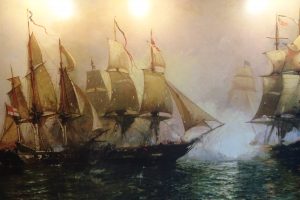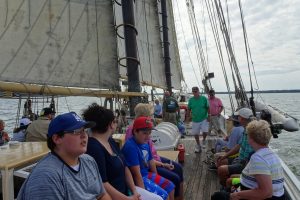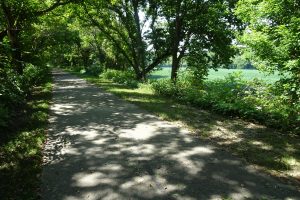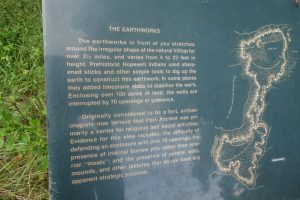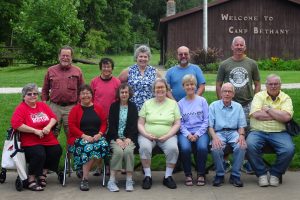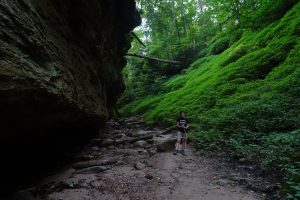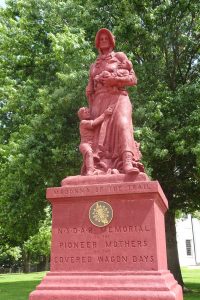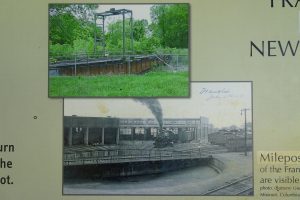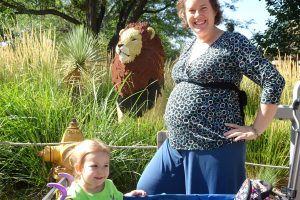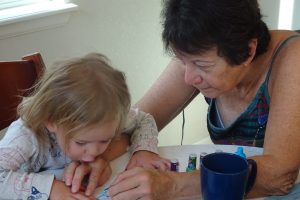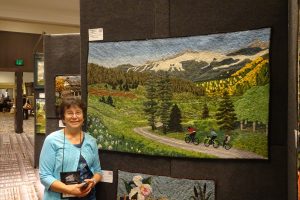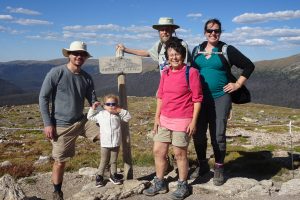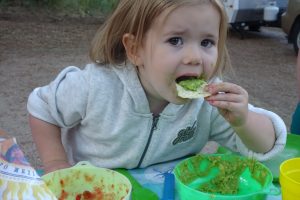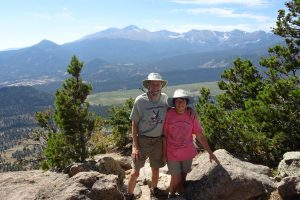This is our first new blog post since September 2017, when we completed our second camping trip from N.H. to the west coast and back. Between then and now we’ve been on a few short trips in “Vagabond.” The longest of those was two and a half weeks to Quebec’s Chic Choc Mountains and Gaspé Peninsula and the east coast of New Brunswick in 2018. Other trips included weekends to the White Mountains in N.H, the Connecticut Lakes region of N.H., and the Thousand Islands region along the St. Lawrence River in upstate N.Y., as well as two weeks to the Virginia & D.C. area. Now we have begun our third long (multiple-month) post-retirement trip. This time we’ll be out for 72 days, headed as far west as Colorado before exploring for the first time six states in the south-central region as we make our way back to N.H. before winter sets in.
The map of the states on the side of our camper has stickers for each of the lower 48 states. Our self-imposed criteria for earning each new state sticker are to camp in the state, go for a hike in it, and go for a bike ride in it. Then we noticed that the map also has stickers for the five Great Lakes, and had to decide upon qualifications for putting them on the map. We came up with camping in the watershed area of the lake, plus at least two of the following three activities: hiking in the lake’s watershed, biking in the lake’s watershed, and swimming in the lake. The two Great Lakes for which we had not previously earned a sticker, Ontario and Erie, were our first goals on this year’s trip.
13 Aug: We found a very nice swimming and picnicking area at New York’s Fair Haven Beach State Park west of Oswego for our Lake Ontario swim. The campground in that park looked very attractive, so we would like to camp there on some future trip. Continuing west to Lake Erie, we then swam and camped at Evangola State Park.
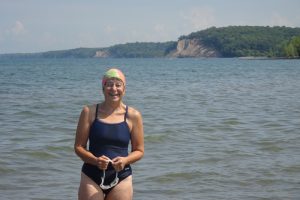
14 Aug: Traveling from New York to Ohio, we stopped at Erie, Penn., to visit the Erie Maritime Museum. From its earliest days, Erie was important to both commercial and military activities on the Great Lakes because of its large, well-sheltered harbor. Among the many excellent displays there were several about the War of 1812 naval battle won by the fleet of Commodore Oliver Hazard Perry (“Don’t Give Up The Ship”) to establish control of the upper Great Lakes over the British. Late in the afternoon, we went on a sail on the schooner Lettie G. Howard, which was originally built in Massachusetts and sailed for many years as a commercial fishing vessel. We passengers participated by helping the crew hoist the large sails. A perfect sailing breeze made for a thoroughly enjoyable sail.
